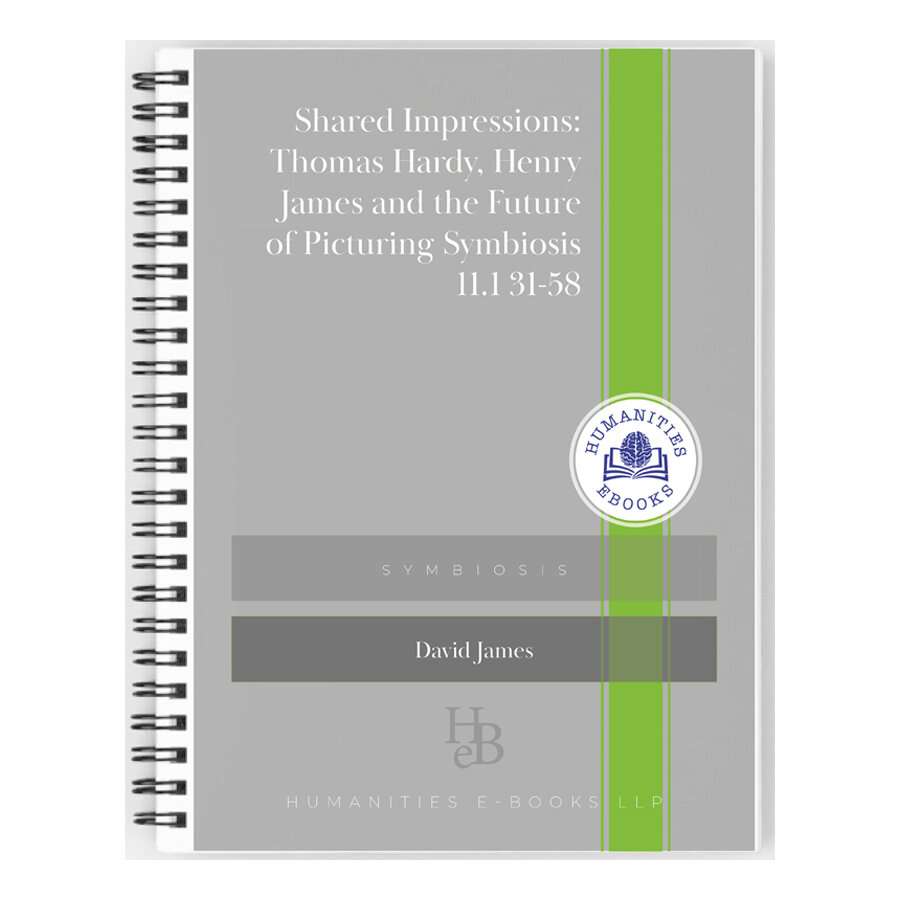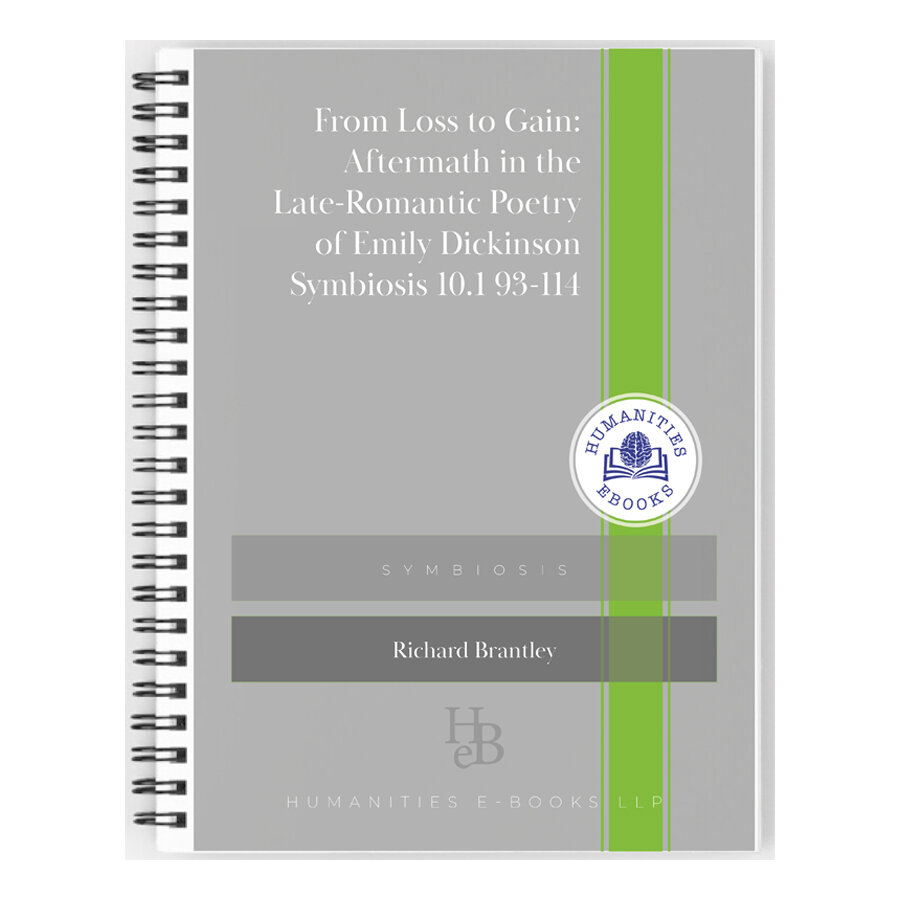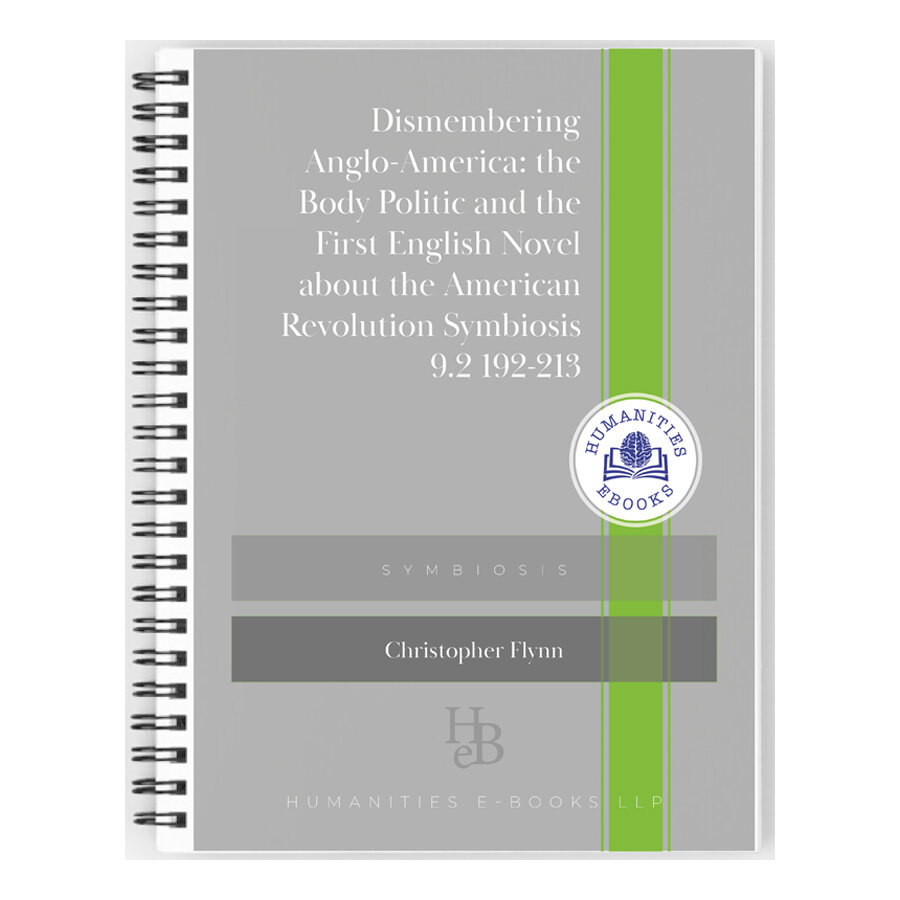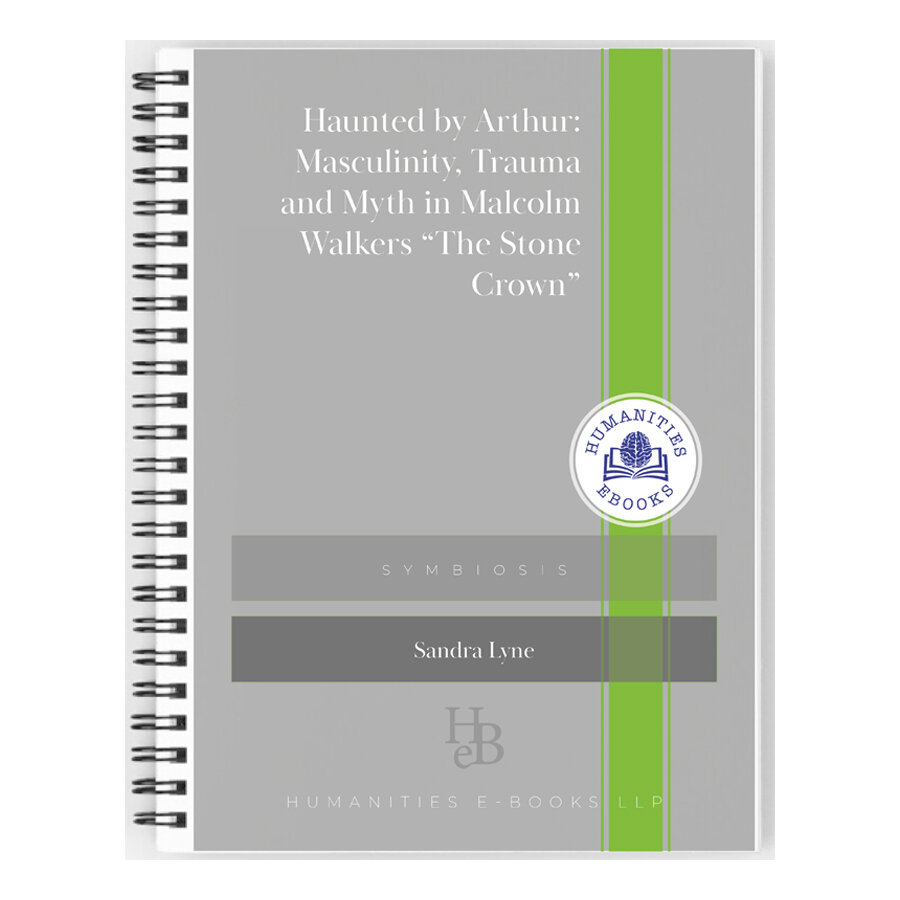Author: Bill Lazenbatt
Number of Pages: 15
This essay, originally published in Symbiosis: A Journal of Anglo-American Literary Relations, examines the literary interactions between Eudora Welty and contemporary Irish writers. Bill Lazenbatt explores the influences and correspondences in Welty's work, particularly focusing on her connections with Elizabeth Bowen and the thematic and narrative parallels with Irish literature. The essay delves into how Welty’s regionalist perspective transcends its origins to engage with broader literary traditions, making significant contributions to the understanding of transatlantic literary influences.
Author: Kevin J. Hayes
Number of Pages: 16
This essay, originally published in Symbiosis: A Journal of Anglo-American Literary Relations, explores the adventurous journey of Henry J. Coke through the American West as depicted in his book A Ride over the Rocky Mountains. Kevin J. Hayes analyses how Coke’s experiences compare to the romanticised American frontier depicted by James Fenimore Cooper. The essay delves into how literature influenced British perceptions of the American wilderness and how Coke’s real-life experiences differed from his literary expectations. Hayes also examines the cultural and literary significance of Coke's narrative within the broader context of Anglo-American literary relations.
Author: Robert Lawson-Peebles
Number of Pages: 16
This essay, originally published in Symbiosis: A Journal of Anglo-American Literary Relations, provides a detailed analysis of James Fenimore Cooper’s first novel, Precaution, and its thematic connection to the Battle of Waterloo. Robert Lawson-Peebles explores how Cooper's work reflects the socio-political landscape of his time and the moral underpinnings of material forms. The essay highlights Cooper’s early literary efforts to reconcile the moral and material worlds, offering insights into his development as a writer and his contribution to American literature.
Symbiosis 14.1
Author: Miranda El-Rayess
Pages: 19
'‘Something in the ballads which they sang’: James’s ‘Rose-Agathe’ and Tennyson’s The Princess' by Miranda El-Rayess, provides a comparative analysis of Henry James's short story 'Rose-Agathe' and Alfred Lord Tennyson's narrative poem 'The Princess'. Originally published in Symbiosis: a Journal of Anglo-American Literary Relations, this essay explores the thematic and narrative parallels between the two works, focusing on how James engages with Tennysonian motifs and ideas. El-Rayess examines the ways in which James's use of irony and allusion critiques conventional gender roles and objectification. This scholarly work is essential for readers interested in literary criticism, gender studies, and transatlantic literary influences.
Symbiosis 14.1
Author: James Peacock
26 Pages
'A Tale of Too Many Cities: The Clash’s ‘Ghetto Defendant’ and Transnational Disruptions' by James Peacock, offers a critical analysis of The Clash's song 'Ghetto Defendant' and its transnational themes. Originally published in Symbiosis: a Journal of Anglo-American Literary Relations, this essay explores the cultural and political dimensions of the song, highlighting the collaboration between Joe Strummer and Allen Ginsberg. Peacock delves into the song's commentary on urban decay, drug addiction, and global political tensions, situating it within the broader context of The Clash's discography and the punk movement. This scholarly work is essential for readers interested in musicology, cultural studies, and transatlantic literary relations.
Author: Simon Perril
Pages: 17
Author: Ian F. A. Bell & Meriel Lland
Pages: 35
Author: David James
Pages: 31
Symbiosis 11.2 85-99
Author: David Ashford
Pages: 15
'Hostile Symbiosis: The American Invasion of the London Underground in Theodore Dreiser’s The Stoic' by David Ashford, explores the historical and literary significance of Theodore Dreiser's novel The Stoic. Originally published in Symbiosis: a Journal of Anglo-American Literary Relations, this essay examines Dreiser’s depiction of the American takeover of the London Underground, highlighting themes of nationalism, capitalism, and technological innovation. Ashford delves into the historical context of the novel, including Dreiser's own experiences in London and the real-life figures who inspired his characters. This scholarly work is essential for readers interested in literary criticism, historical fiction, and the intersections of literature and history.
Symbiosis 11.1 89-104
Author: David Simmons
Pages: 16
'H. P. Lovecraft and the Shadow of England' by David Simmons, explores the profound influence of English culture on the American writer H. P. Lovecraft. Originally published in Symbiosis: a Journal of Anglo-American Literary Relations, this essay examines how Lovecraft’s Anglophilia is reflected in his fiction, poetry, and personal correspondence. Simmons provides an in-depth analysis of Lovecraft's literary techniques, his use of English settings and characters, and his ideological leanings. This scholarly work is essential for readers interested in Lovecraft studies, literary criticism, and transatlantic cultural influences.
Author: Richard E. Brantley
Symbiosis 9.2 192-213
Author: Christopher Flynn
Pages: 24
'Dismembering Anglo-America: The Body Politic and the First English Novel about the American Revolution' by Christopher Flynn, offers a critical examination of Samuel Jackson Pratt’s novel Emma Corbett; or the Miseries of Civil War (1781). Originally published in Symbiosis: a Journal of Anglo-American Literary Relations, this essay explores Pratt's depiction of the American Revolution and its impact on the Anglo-American community. Flynn delves into the novel's sentimental tradition, its portrayal of the body politic, and the cultural significance of representing the American Revolution in British literature. This scholarly work is essential for readers interested in literary criticism, early American history, and transatlantic cultural studies.
Symbiosis 11.1
Author: Maria del Pinar Blanco
Pages: 16
'DBC Pierre’s Blood Meridian: Cosmopolitan Returns and the Imagination of History' by Maria del Pinar Blanco, offers a critical exploration of DBC Pierre's narrative techniques and thematic concerns in his historical novel Blood Meridian. Originally published in Symbiosis: a Journal of Anglo-American Literary Relations, this essay examines how Pierre engages with historical events and figures, reinterpreting them through a cosmopolitan lens. Blanco delves into the novel's portrayal of historical violence, the construction of cultural identities, and the ethical implications of narrating history. This scholarly work is essential for readers interested in literary criticism, historical fiction, and the intersections of history and literature.
Author: Susan Manning
Author: Ian Twiddy
Author: Sandra Lyne
Symbiosis 13.2
Author: Guy Mark Foster
Pages: 31
'Looking Good: Neutralizing the Desiring (Black Male) Gaze in Alice Walker’s Meridian' by Guy Mark Foster, offers a critical analysis of Alice Walker’s novel Meridian. Originally published in Symbiosis: a Journal of Anglo-American Literary Relations, this essay delves into the dynamics of the male gaze, gender roles, and racial politics within the context of Walker's narrative. Foster examines how the novel subverts traditional gender expectations and addresses complex issues of identity and power. This scholarly work is essential for readers interested in literary criticism, gender studies, and African American literature.
Symbiosis 13.1
Author: Kim Sasser
Pages: 20
'Solidarity through Difference: Rushdie’s Anti-Example in The Jaguar Smile' by Kim Sasser, provides an in-depth analysis of Salman Rushdie’s travel narrative The Jaguar Smile: A Nicaraguan Journey. Originally published in Symbiosis: a Journal of Anglo-American Literary Relations, this essay examines Rushdie’s exploration of solidarity in the context of Nicaraguan politics and the broader implications for transnational and cosmopolitan studies. Sasser critiques Rushdie's approach to solidarity, highlighting the complexities and contradictions in his narrative. This scholarly work is essential for readers interested in literary criticism, cultural studies, and the intersections of literature and politics.
Symbiosis 13.1
Author: Julie E. Hall
Pages: 17
'Nathaniel Hawthorne’s ‘Wild’ Wales' by Julie E. Hall, explores Nathaniel Hawthorne's travels in Wales and his literary reflections on the region. Originally published in Symbiosis: a Journal of Anglo-American Literary Relations, this essay delves into how Hawthorne's experiences and observations in Wales influenced his writings. Hall examines Hawthorne’s perception of Welsh culture, landscapes, and history, and how these elements are portrayed in his works. This scholarly piece is essential for readers interested in Hawthorne’s literature, travel writing, and transatlantic cultural exchanges.
Author: J. Patrick Cesarini
Author: Fabio L. Vericat
Symbiosis 12.2
Author: Kevin Hutchings
Pages: 17
'Romantic Niagara: Environmental Aesthetics, Indigenous Culture, and Transatlantic Tourism, 1776–1850' by Kevin Hutchings, explores the interplay between the environmental aesthetics of Niagara Falls, indigenous culture, and the rise of transatlantic tourism from 1776 to 1850. Originally published in Symbiosis: a Journal of Anglo-American Literary Relations, this essay examines the transformative impact of Niagara on European and American visitors, as well as its cultural and spiritual significance for indigenous peoples. Hutchings delves into the complex relationships between nature, culture, and tourism, providing a nuanced analysis of how Niagara became both a symbol of sublime natural beauty and a site of colonial and commercial exploitation. This scholarly work is essential for readers interested in environmental literature, cultural studies, and the history of tourism.
Symbiosis 12.2
Author: Andrew Eastham
Pages: 25
'‘Master of Irony’: Henry James, Transatlantic Bildung and the Critique of Aestheticism' by Andrew Eastham, delves into the intricate relationship between Henry James's literary irony and his critique of Aestheticism. Originally published in Symbiosis: a Journal of Anglo-American Literary Relations, this essay explores how James’s transatlantic experiences shaped his ironic literary style and his critical perspective on the Aesthetic movement. Eastham examines key themes in James's work, such as cultural translation, performative identity, and the dialectical relationship between irony and aesthetic autonomy. This scholarly work is essential for readers interested in literary criticism, transatlantic studies, and the evolution of modernist literature.
Symbiosis 12.2
Author: Michael Collins
Pages: 19
'Transatlantic Class: Martin Amis and the ‘Special Relationship’ of the 1980s' by Colin Hutchinson, provides a comprehensive analysis of Martin Amis's works and their reflection of the transatlantic dynamics between the UK and the USA during the 1980s. Originally published in Symbiosis: a Journal of Anglo-American Literary Relations, this essay explores Amis's unique position as a transatlantic novelist and his critique of the social and political transformations of the era. Hutchinson delves into themes of Americanization, cultural exchange, and the impact of the New Right on both sides of the Atlantic, offering a rich comparative study of Amis's early and mid-period fiction. This scholarly work is essential for readers interested in contemporary literature, cultural studies, and transatlantic literary relations.
Author: Christopher Coffman
Author: Karina Williamson






























Author: Richard Swigg
Number of Pages: 20
An in-depth analysis of Charles Tomlinson’s poetry from The Necklace (1955) to The Vineyard Above the Sea (1999), focusing on his dialogue with American literature. Richard Swigg explores Tomlinson’s adaptation of American verse forms and his engagement with American voices, highlighting the transatlantic influences that shaped his work.